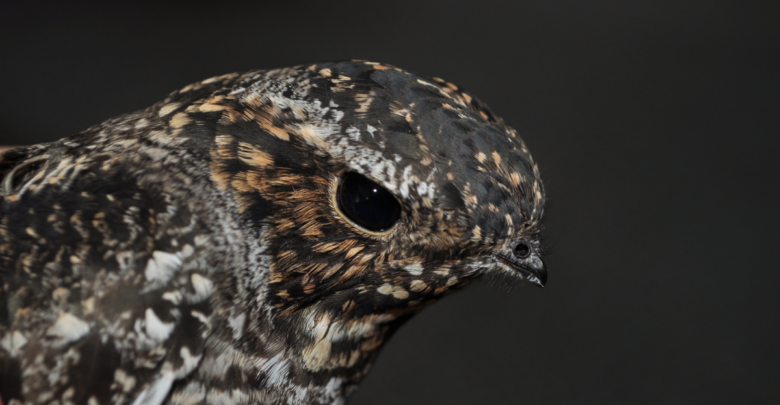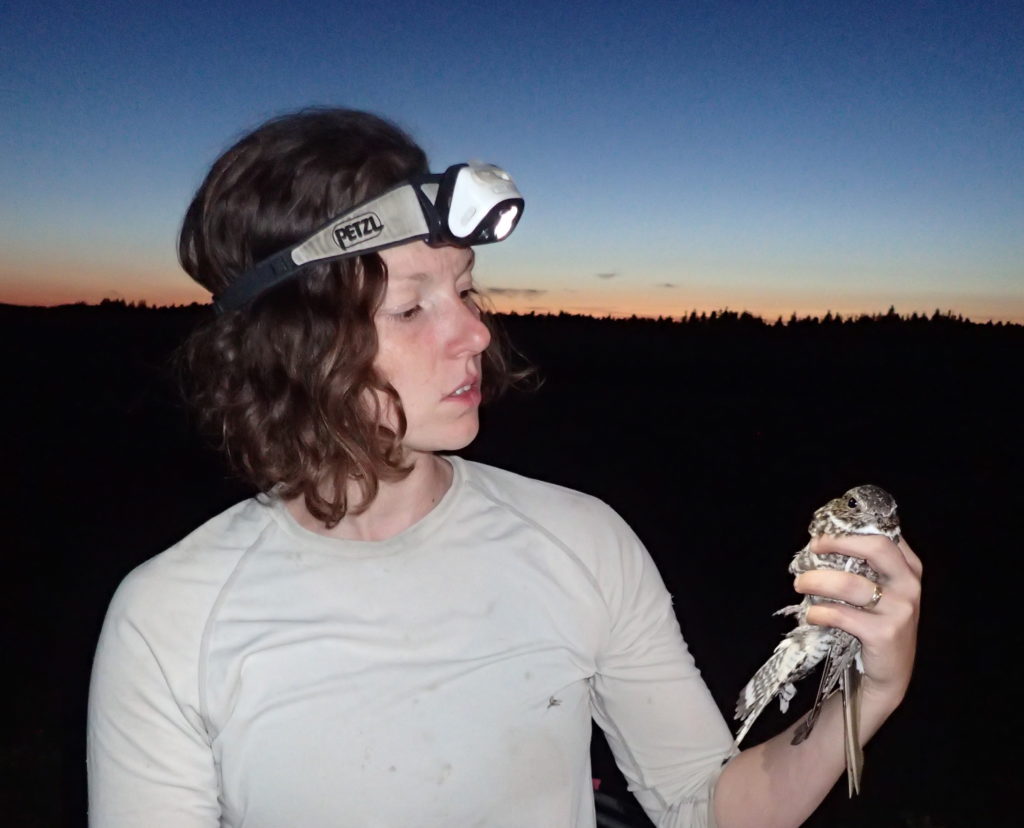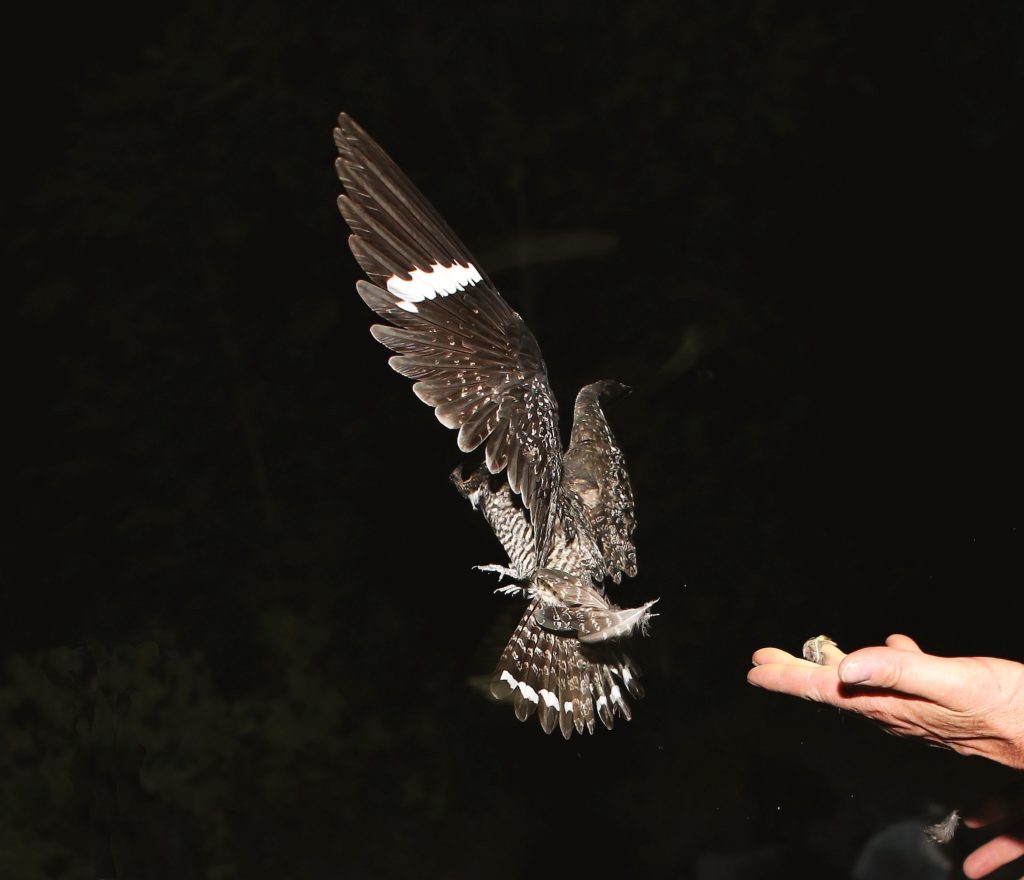 Supplied
SuppliedA recent study uncovered the secrets to the common nighthawk migration, pinpointing where new research and conservation efforts should be focused.
The study looked at migratory connectivity through all stages of migration for common nighthawks. It was led by Elly Knight, a PhD candidate in the department of biological sciences at the University of Alberta, and published in Ecography. The study found that future common nighthawk research should be focused in Colombia or at their North American wintering grounds, and that migratory connectivity can be used to find similar information about other migratory birds.
To start, Knight wanted to set the record state on what common nighthawks are.
“Common nighthawks are not very well named — they’re not a hawk,” she said. “They’re a member of the nightjar family, which is a group of birds that we don’t know much about.”
Knight explained that the reason for not knowing much about nighthawks is due to the birds’ nocturnal nature, meaning they are active at night rather than day, and the camouflage that disguises nighthawks as leaves or branches while resting.
What is known about the nighthawks, Knight said, is that they are aerial insectivores, a group of birds that catch insects while flying.
“All these birds that rely on insect populations are declining faster than any other group of birds in North America,” she said. “Common nighthawks migrate from North to South America and back every year, which makes pinpointing reasons for decline particularly difficult.”

The goal of Knight’s research was to find a method of pinpointing reasons of decline for all migratory birds. One of the techniques used was measuring migratory connectivity, which Knight described as the ‘togetherness’ of a bird population.
To explain migratory connectivity, Knight used the example of two nighthawk populations, breeding in Alberta and British Columbia respectively.
If the Alberta and British Columbia populations mix together at their wintering grounds, this is marked as low migratory connectivity. She said that one level of connectivity is not necessarily worse than another, but that research should be focused in areas of high connectivity, where populations are more distinct.
“We took a strategic approach, which is using what we call ‘migratory connectivity’ to try and narrow in on some key times and places in that annual cycle where we think the declines might be happening,” Knight explained. “Instead of having this big list of declines at any time or place, we can focus our next steps towards these specific times and places.”
The team measured migratory connectivity for one year, including fall and spring migration as well as the time in between.
“What’s never been done before is to really take a comprehensive perspective of migratory connectivity.” Knight said. “People typically just look at it between the breeding and the wintering grounds. But these birds could be influenced by what’s happening on migration as well.”
The data was collected through fitting common nighthawks with GPS ‘backpacks,’ which relayed the nighthawks’ locations every four to 10 days. Knight explained that the backpacks did not affect the birds’ flying and would likely fall off on their own.

“[Nighthawks] are extremely difficult to recapture,” She noted. “We put out 90-something tags, and we tried to get most of those back. We got three.”
Counting each location on a finger, Knight recalled that she banded birds from four of 13 studied populations. Her main role was communicating with potential partners and creating a collaborative network.
“That collaboration was really, really key to the success of this project,” Knight said. “It allowed us to build this big, standardized data set that we can now go on to ask all sorts of other questions about.”
Knight explained that the common nighthawk populations were originally expected to take two migration routes, heading down eastern and western North America respectively. However, her research showed this was not the case.
“All of the birds we tracked met together on what we call the Mississippi flyway — sort of east-central North America,” she said. “We had one bird from the coast of B.C. that flew 3,000 kilometres due east, over the Rocky Mountains, before turning south to migrate.”
Knight noted that common nighthawk populations sharing a migration route at the same time of year meant low connectivity. The populations also mixed at their wintering grounds, implying that future research should be focused on the breeding grounds of common nighthawks.
However, one distinct region of the wintering grounds where the populations separated was in Columbia, just before the nighthawks returned north.
“It looks like that northern Columbia region may be an important area for stop-over, so for birds fuelling up before that massive oceanic flight,” Knight said. “We did see this very distinct spike in connectivity in that region. That’s an area that we’d like to spend some more time looking into.”
Knight mentioned that there are already a few ideas circling for next steps of common nighthawk research, centred around the places marked as having high migratory connectivity.
“This particular study doesn’t tell us what to fix,” Knight noted. “It tells us where we need to look to figure that out.”
The study may also indirectly aid conservation efforts for other migratory birds by providing a standardized approach that adds direction to research efforts.
In the meantime, Knight mentioned that “no-regrets actions” are great ways to help nighthawks.
“There’s lots of things that people can do to help aerial insectivores now, that are no-regrets actions,” she said. “Things like implementing integrated pest management practices on agricultural lands, retaining wetlands in agricultural landscapes and Prairie landscapes, and driving slow on gravel roads.”
Finally, Knight emphasized that this project was particularly successful due to its large collaborative network.
“It’s really important to work together, and it’s really neat to see conservation ecology moving towards this really collaborative paradigm.”




